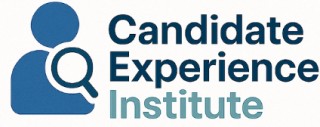Understanding the Role of HR Communication in Recruitment
The Importance of Communication in Recruitment
In the recruitment process, communication plays a pivotal role in shaping the candidate experience. Human resources communication is not just about conveying messages; it's about creating a connection between the organization and potential employees. Effective communication ensures that candidates feel valued and informed throughout their journey with a company.
Internal communication within the HR team is crucial to align organizational goals with recruitment strategies. When HR teams work cohesively, they can create a consistent message that resonates with candidates. This consistency helps in building trust and transparency, which are essential for a positive candidate experience.
Building a Communication Strategy
To enhance candidate experience, companies need to develop a robust communication strategy. This involves identifying the right communication channels to reach potential candidates effectively. Whether through social media, emails, or direct messages, the chosen channels should reflect the company culture and values.
Moreover, having a clear communication plan can help in addressing any potential challenges that might arise during the recruitment process. By setting clear objectives and using effective communication tools, HR teams can improve communication and ensure that candidates receive timely and accurate information.
Enhancing Employee Engagement
Effective HR communication is not limited to external candidates; it also impacts current employees. Engaged employees are more likely to become brand ambassadors, sharing positive experiences that can attract new talent. Internal communications should focus on creating an environment where employees feel heard and valued.
Feedback mechanisms are essential in this regard. Encouraging open dialogue and providing resources for employees to voice their opinions can lead to improved employee engagement and a more cohesive work environment.
For more insights on the role of communication in recruitment, consider exploring the role of pre-screening interviews in the hiring process.
Key Elements of Effective HR Communication
Building Blocks for Effective HR Communication
Effective HR communication is crucial in cultivating a positive candidate experience. Well-structured communication engages candidates and aligns with the organizational goals and values. To achieve this, human resources must harness several key elements that ensure clear, concise, and purposeful messaging.
One fundamental aspect is developing a comprehensive communication strategy that aligns with the company culture and objectives. This strategy should incorporate the company’s goals, policies, and procedures, serving as a blueprint for all internal communications. Clear goals help human resources tailor messages that resonate with potential employees, maintaining consistency across various communication channels.
Engaging employees and candidates requires utilizing effective communication skills. Human resources teams need to foster a two-way communication model, encouraging feedback and improving engagement. This approach allows candidates to feel valued and appreciated, enhancing their overall experience with the organization.
Internal communications play a pivotal role in maintaining transparency. Messages should be clear and accessible, utilizing the appropriate communication channels such as email, intranets, and social media to reach the target audience effectively. These channels should be chosen based on the preferences and behaviors of the audience to ensure maximum reach and engagement.
To create a seamless candidate experience, organizations should develop an adaptable communication plan. This involves utilizing resources that support consistent messaging throughout the recruitment process. It helps integrate different elements such as team collaboration, employee engagement, and communications strategy, ensuring all teams work harmoniously toward shared objectives.
Furthermore, innovation in communication tools allows human resources to manage resources effectively, enhancing the employee experience. Leveraging technology aids in streamlining processes and delivering messages efficiently, ensuring candidates are well-informed and engaged at every stage.
An
enhanced candidate experience can significantly impact perceptions of the organization, making it crucial for communication to be strategically planned and executed. Aligning communication skills with organizational goals not only benefits the existing employees but also creates a lasting positive impression on potential candidates.
Challenges in HR Communication
Overcoming Barriers in HR Communication
Inadequate communication skills and unclear messaging can often disrupt the flow of information within an organization. This breakdown can lead to candidates and employees feeling disconnected from the company culture and its organizational goals. Challenges in human resources communication are multifaceted and need addressing to improve overall employee engagement and satisfaction.
Firstly, a solid communication plan is crucial to facilitate effective communication across various channels. Such a plan helps in delivering consistent and clear internal communications to all stakeholders. However, despite having a structured communication strategy, barriers like information overload, misinterpretation of messages, and lack of feedback mechanisms often pose significant hurdles.
Moreover, communication channels within organizations can sometimes become clogged, affecting internal communications and diminishing their effectiveness. For instance, reliance on emails without utilizing modern communication tools or social media for more engaging and dynamic exchanges can hinder team connections. It's vital for HR teams to diversify their communication strategies to include a mix of traditional and innovative channels.
Employees are the backbone of effective internal communication. However, if there is a lack of resources or inadequate human resources policies and procedures in place, communication can falter. Aligning communication resources with organizational goals can help ensure that the information shared is relevant, concise, and beneficial to all parties.
Furthermore, fostering an environment where employees feel valued and heard is imperative. Introducing a feedback loop within the communication strategy ensures that employees can actively participate in conversations, promote engagement, and help shape the direction of future communications. Establishing clear policies and procedures for feedback can dramatically enhance internal communication practices.
For those looking to refine their strategies, asking questions when identifying potential challenges is a fundamental step. A comprehensive list of key questions can be a valuable resource for HR professionals aiming to enhance their communication effectiveness. You can find more insights on this topic by exploring
key questions to ask when contacting a reference. By addressing these structural issues, companies can boost their employee experience and achieve greater organizational success.
Strategies for Improving HR Communication
Strategies to Boost HR Communication Effectiveness
Effective HR communication is essential for fostering a strong company culture and improving both employee experience and engagement. To achieve this, organizations should focus on refining their internal communication strategies, ensuring that messages are not only delivered but truly understood and engagement is fostered across all levels.
One strategy is to clearly define communication goals. By aligning these goals with the organization's overall objectives, human resources can ensure that communications are both relevant and impactful. This often involves collaboration with various teams within the company to understand their specific communication needs and challenges.
Utilizing appropriate communication channels is another vital aspect. Different messages may require different channels, whether it be email, social media, or face-to-face discussions. The choice of channel can significantly affect how the message is received and understood by employees. Consistency across these platforms is key to maintaining clarity and coherence in the communication strategy.
Incorporating feedback mechanisms is crucial. By establishing regular touchpoints for employee feedback, HR can continually assess and improve communication strategies. This not only helps in identifying areas for improvement but also makes employees feel valued and heard, thereby enhancing their engagement.
Training employees in communication skills can also contribute to more effective interactions. Providing resources and workshops focused on communication tools and strategies can empower employees to engage better with their teams and the organization as a whole.
Finally, leveraging technology can streamline communication processes. Advanced communication tools and platforms can help in organizing and distributing messages efficiently, ensuring that all employees receive the necessary information, regardless of their location or work pattern. However, the introduction of technology should always be accompanied by proper training to maximize its potential benefits.
In conclusion, by developing a comprehensive communication plan that includes clear goals, effective channels, regular feedback loops, continuous training, and the strategic use of technology, companies can significantly improve their HR communication practices, leading to better employee engagement and a more cohesive company culture.
The Impact of Technology on HR Communication
The Role of Technology in Modern HR Communication
Leaning into the digital age, the role of technology cannot be ignored when discussing the enhancement of communication within Human Resources (HR). An effective communication strategy is vital in achieving organizational goals, and using the right tools can make a significant difference in HR communication.
Firstly, internal communication platforms have drastically transformed the way messages are relayed within a company. These tools help streamline communication, allowing for clear and consistent internal communications that keep employees informed and engaged. Integrating platforms such as Slack or Microsoft Teams can facilitate real-time feedback and support a vibrant company culture.
Furthermore, social media has also emerged as a powerful channel for communication. By leveraging these platforms, companies may not only enhance employee engagement but also reach potential candidates, aligning with recruitment goals and enhancing the overall candidate experience.
In addition to social media, employee communication apps are equally important. They provide a direct line for disseminating information swiftly and are essential for a comprehensive communication strategy. Such resources allow the human resources teams to align better with the organizational goals by ensuring no policies or procedures are misunderstood.
Moreover, technology aids in creating metrics that measure the effectiveness of HR communication. Analytics tools can track how messages are received and understood, helping HR departments refine their communication plans and strategically improve communication with employees.
The challenge lies in choosing the right mix of communication channels that meet the specific needs of the organization. As technology evolves, so should the strategies for its application in human resources, ensuring that both the employee experience and candidate engagement are optimized.
Measuring the Effectiveness of HR Communication
Evaluation Techniques for HR Communication Success
Measuring the effectiveness of HR communication is essential to ensure that the efforts put into creating a comprehensive communication strategy are yielding the desired results. A robust evaluation process not only helps in fine-tuning the existing communication plan but also enhances overall organizational goals.
Monitoring employee engagement is a key indicator of effective communication. Engaged employees often feel more connected to the company's vision and are more likely to contribute positively towards achieving strategic goals. By utilizing feedback channels such as surveys or feedback forms, HR teams can gauge how employees perceive the messages conveyed to them. Regularly seeking feedback allows companies to adjust their internal communication methods as needed.
It's crucial to leverage communication tools and resources to track engagement metrics. These tools can provide insights into message reach, engagement rates, and responsiveness. Evaluating these metrics will help identify what works and what doesn’t, essentially guiding HR teams in refining their communication techniques.
Another aspect is to review the effectiveness of the communication channels used. Whether it's emails, internal platforms, or social media, understanding which channels are most successful in reaching and engaging employees can significantly impact an organization's internal communications.
Conducting regular reviews of company policies and procedures related to communication ensures that the organization remains adaptable and responsive to the changing needs of its workforce. This also helps maintain a transparent company culture, where employees are well-informed and motivated.
Ultimately, the primary goal of measuring HR communication effectiveness is to enhance the employee experience. By maintaining a communication strategy that aligns with organizational goals, and effectively utilizing available resources, a company can foster a more cohesive and efficient workforce.














